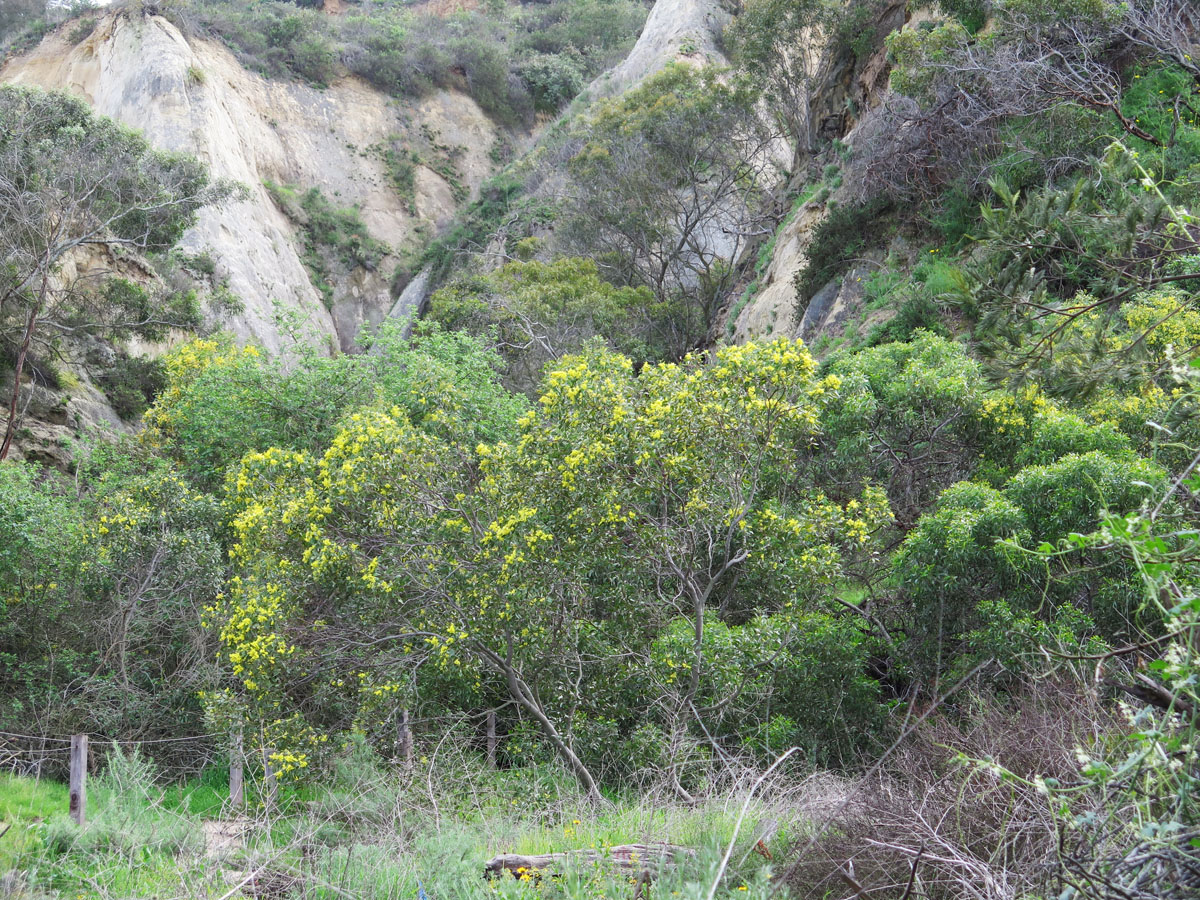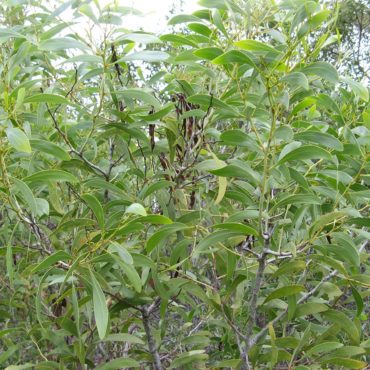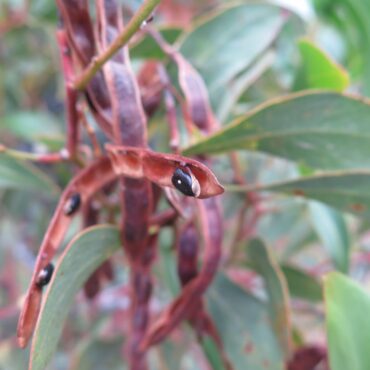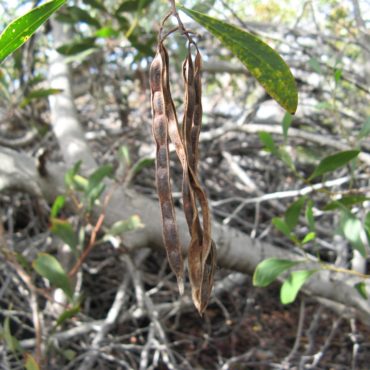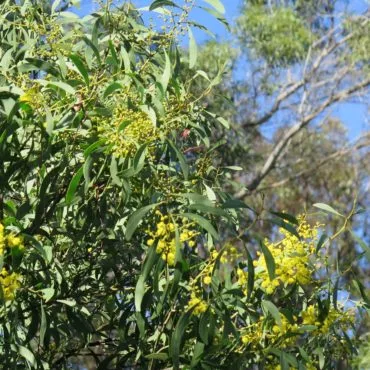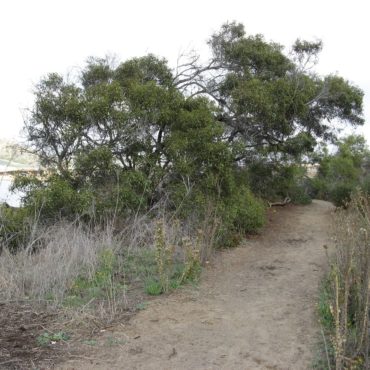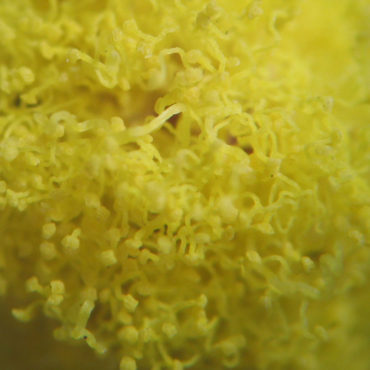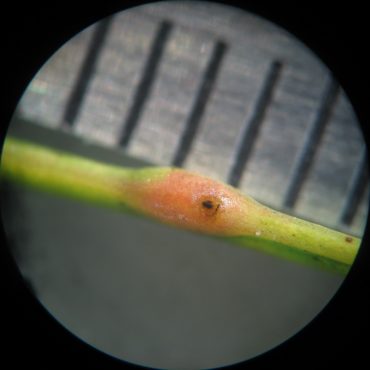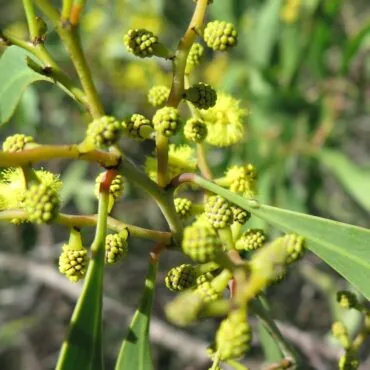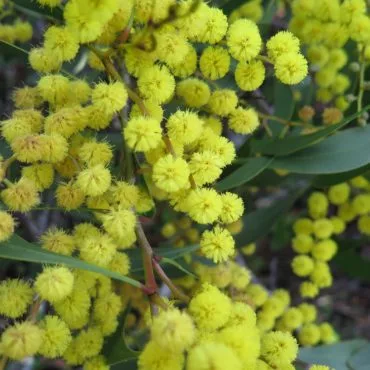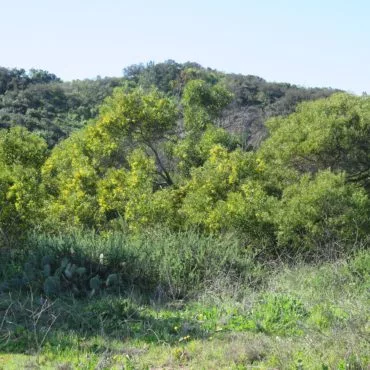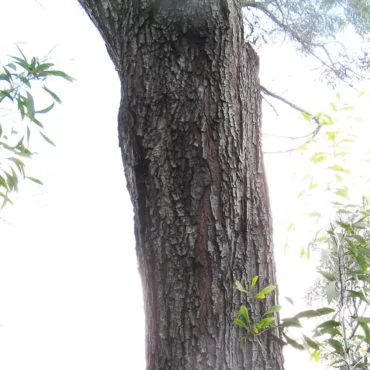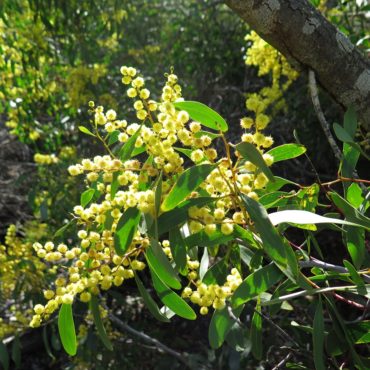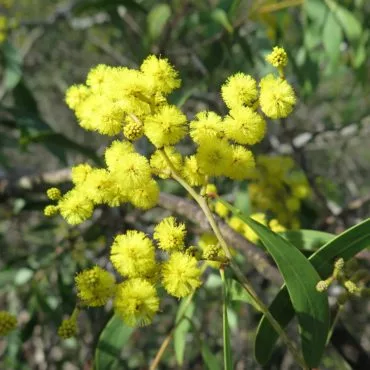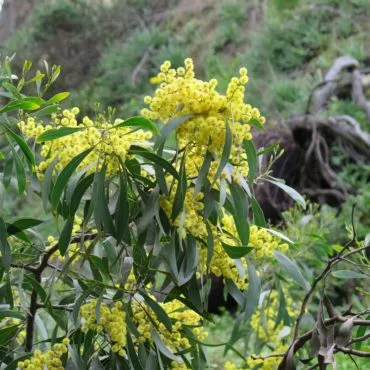“Pride is like the beautiful acacia, that lifts its head proudly above its neighbor plants – forgetting that it too, like them has its roots in the dirt.” Christian Nestell Bovee. (Intuitions and Summaries of Thought, 1862)
Species of Acacia, many with billowing masses of fragrant, yellow flowers, are among our best known California landscape plants; but many are also on the California Invasive Species list – plants that have escaped from the landscape into wildlands, where they replace native species and disrupt community relationships.
Golden wattle (Acacia pycnantha) is native to southeastern Australia and has been named the national flower of Australia. Decades ago, many were planted in San Elijo Ecological Reserve to shelter and obscure a hunting lodge that once nestled against the hills on the south side. The golden wattles have made themselves at home and decades later, for better or worse, are still decorating the entrance to Annie’s Canyon in late-winter yellow.

